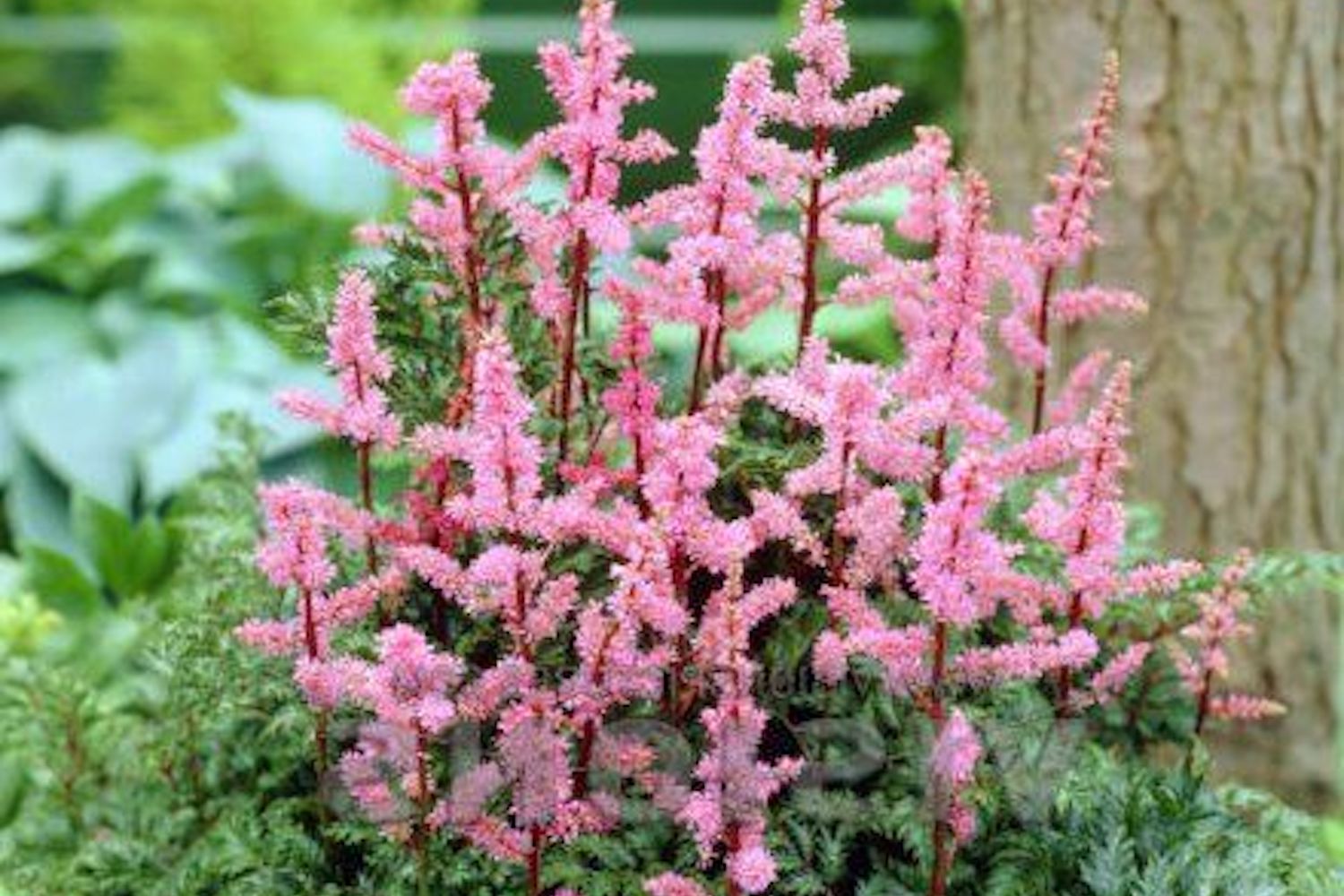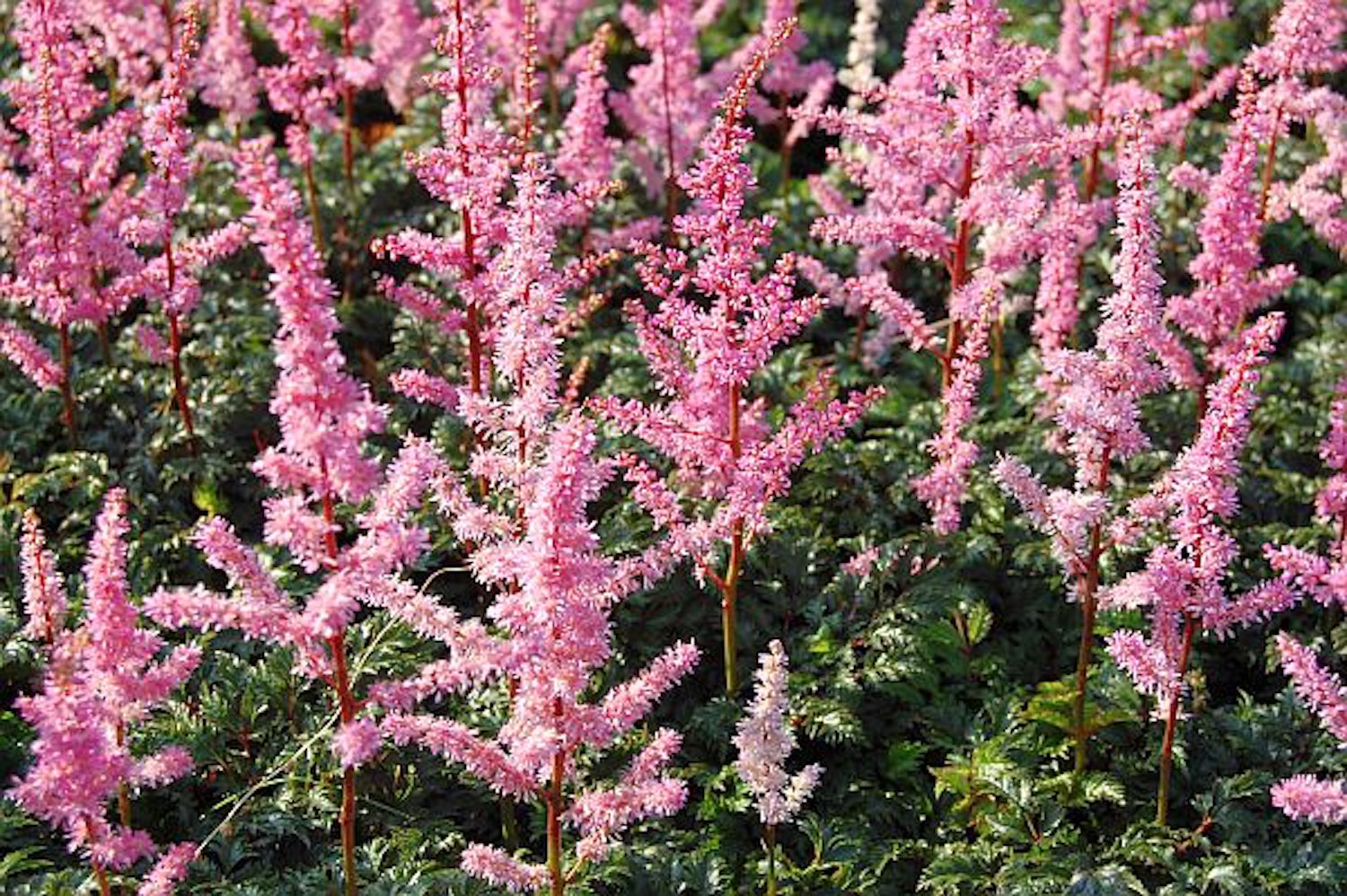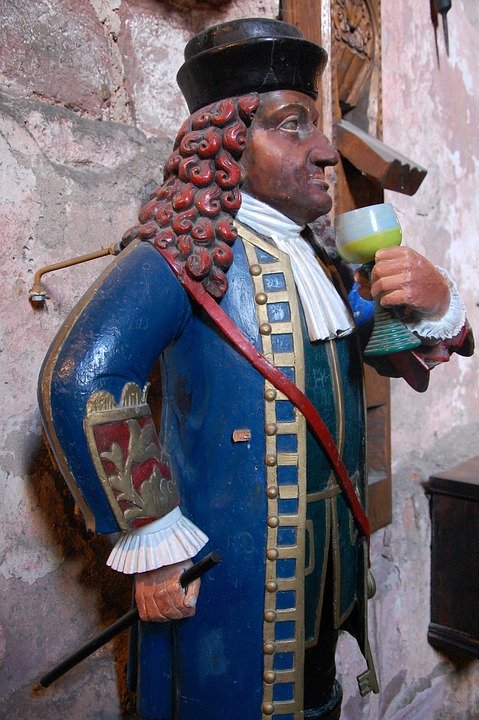Astilbe x crispa 'Perkeo'
Approx. 0.5 litre pot
About this cultivar:
Astilbe x crispa 'Perkeo' gives you glossy, dark green, much-divided (almost crinkly) leaves, tinged bronze when young. From which grow sternly stiff stems of narrow plumes of deep pink flowers - almost aggressively! This is a fun dwarf of a plant.
Don't know much about this except that is has an RHS AGM. Presume it is a german introduction since Perkeo of Heidelberg (born Clemens Pankert, according to other sources Giovanni Clementi; 1702–1735) was a notable jester and court dwarf of Elector Palatine Charles III Philip in Heidelberg. As guardian of the Great Heidelberg Tun, he has since become an unofficial mascot of the city and region. His name, story and image have been connected with a variety of festivals, traditional songs, cultural and scientific institutions, hotels, restaurants and private companies (in and out of the region) ever since. According to popular legend, Perkeo lived happily into his eighties even tho he only drank wine. Yet one day he took ill and the town doctor had him drink water. He died the next day.
So there you go! A fun dwarf of a plant! R.I.P. Perkeo my homie, may your spirit live forever long in peoples gardens.
- Position: Full sun, partial shade, sometimes full shade
- Soil: Almost any soil - grows well in Ballyrobert! Loves wet soil
- Flowers: July, August, September
- Other features: Royal Horticultural Society Award of Garden Merit (RHS AGM), Cut Flowers or Dried Flowers
- Hardiness: H5 - Hardy in most places throughout the UK even in severe winters (-15 to -10°C), Fully hardy - grows well in Ballyrobert!
- Habit: Bushy, Clump forming
- Foliage: Deciduous
- Height: 15 - 30 cm (0.5 - 1 ft)
- Spread: 30- 60 cm (1 - 2 ft)
- Time to full growth: 2 to 5 years
- Plant type: Herbaceous Perennial
- Colour: Pink, green
-
Goes well with: At Ballyrobert we experiment with plant combinations such as Carex, Periscaria, Monarda, Penstemon, Phlox, Rosa and even Eryngium (yes, Eryngium! We have found moisture tolerant cultivars and put it next to drought tolerant Astilbe cultivars)
About this genus:
Astilbe, also known as false goat's beard or false spirea, is a herbaceous perennial genus that contains eighteen species of perennials that are native to North America and Asia. Astilbe selections are reliable garden favorites, and they tend to love our temperate climate at Ballyrobert. They even tolerate our heavy clay soil. We have trialed many cultivars, and sell those which have done well for us. We have many great cultivars in the garden but don't sell them all (we used to but no-one seemed to love them as much as us!)
Because Astilbe prefers a moist site, even wet feet, it can often be grown beside (but not in!) a pond or stream. Although usually listed as a shade plant, Astilbe can grow well in part shade or even full-ish sun as long at there is enough moisture to stop it drying out. Astilbe chinensis types and other hybrids do not need as much moisture as other species. Astilbe chinensis are slowly spreading, rhizomatous plants which bloom later than the Arendsii hybrids and generally feature hairy (rather than glossy) leaves. The Arendsii hybrids are a large group of hybrids involving crosses between chinensis, thunbergii and asttillboides and as a result they can vary considerably in size, colour and shape. They are named after the prolific perennial breeder George Arends (1862-1952) between 1902 and 1952 he introduced over 74 cultivars of Astilbe!
In and around summer time Astilbe provides a vibrant display of colour in the garden with brightly coloured, feathery flower spikey-plumes above attractive, deeply-cut foliage. Astilbe is one of those genus whose flowers also keep their structure when they dry out - giving you another 'season' of interest albeit in darker-browner hues. As a result they make a great cut flower and they are often found in florists.
This genus looks dreamy in large groups where its colourful flowers paint a broad, impressionistic, swath and attract butterflies. At Ballyrobert we also with plant combinations such as Carex, Periscaria, Monarda, Penstemon, Phlox, Rosa and even Eryngium (yes, Eryngium! We have found moisture tolerant cultivars and put it next to drought tolerant Astilbe cultivars)








